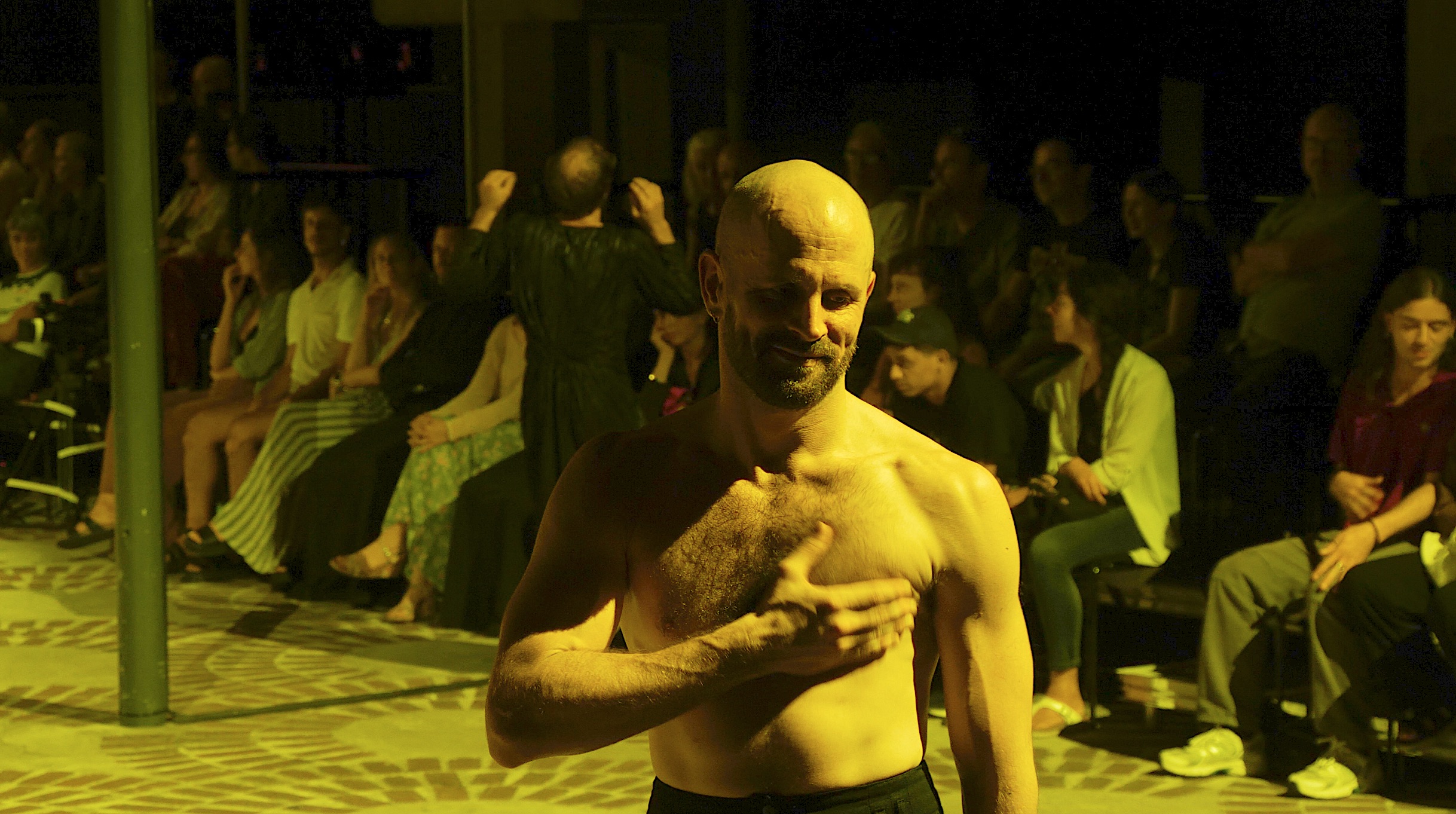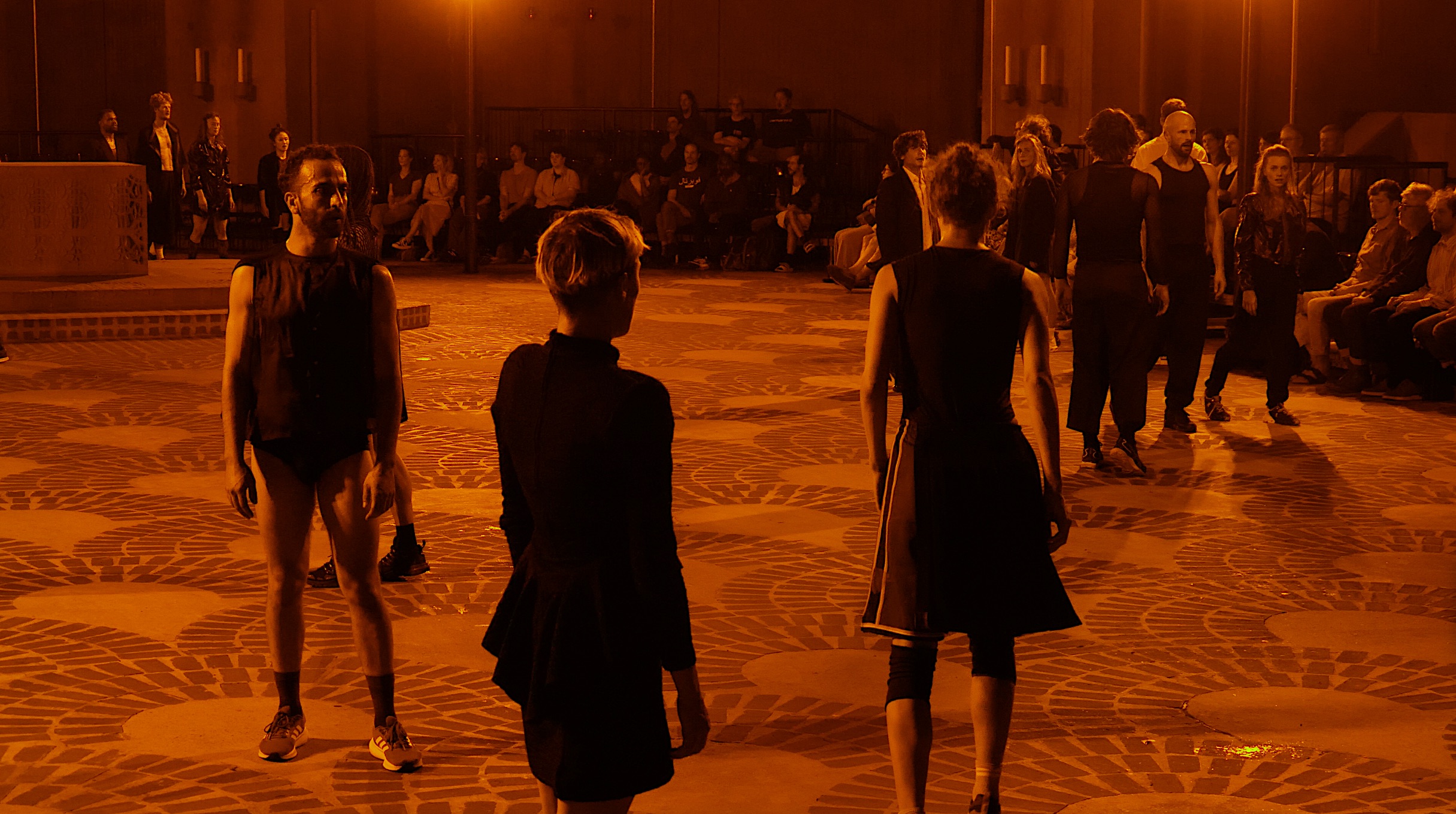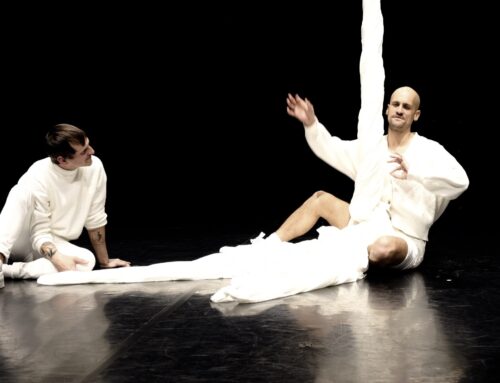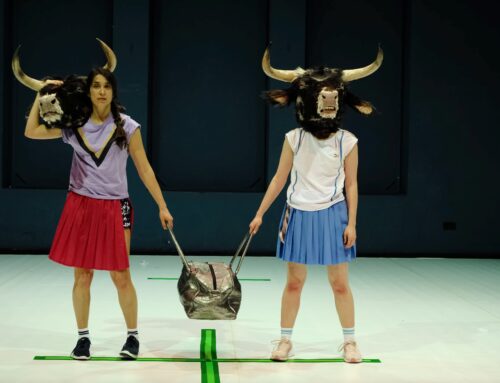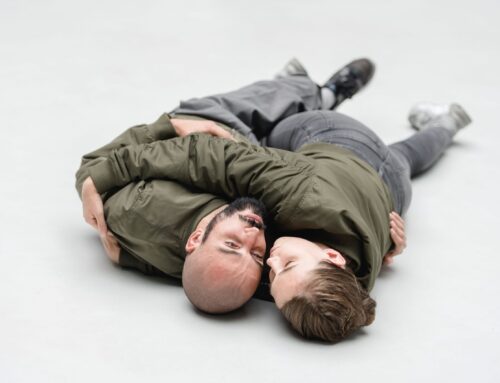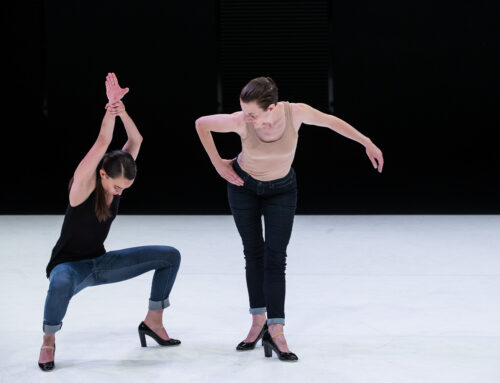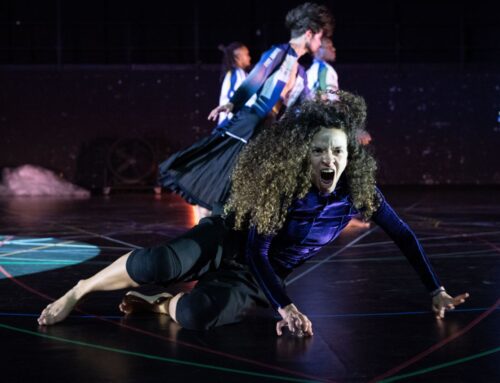Charmatz shows little that is surprising:
Any…
The Tanztheater Wuppertal Pina Bausch presents the first piece of its new director Boris Charmatz with the jaunty French title „Liberté Cathédrale“. He places it in the Mariendom in the small town of Neviges, not far from Wuppertal.
HERE you will find our video-impressions
Night review by Melanie Suchy
What was that? They were all singing lalala. And what they danced was so lalala.
They tried very, very hard and in different ways. All this on a stone floor under a huge concrete dome, but with careful angles. A kind of shielding this strange dome makes. Perhaps it makes silent. But a dance like this can’t stand that, or the humanity it’s supposed to represent here. So the crowd sings, that is the Tanztheater Wuppertal here, and so they run and swarm around, stop, repeat themselves, sink, stand up, jump, roll, crawl, spend themselves, stay with themselves, alienate themselves, move closer to the audience sitting all around, form parades, rows of death dances, jesters‘ trains, jostle, wrestle, carry each other. And when they finally stop singing, you hear the organ or the bells or both. It storms. It really roars.
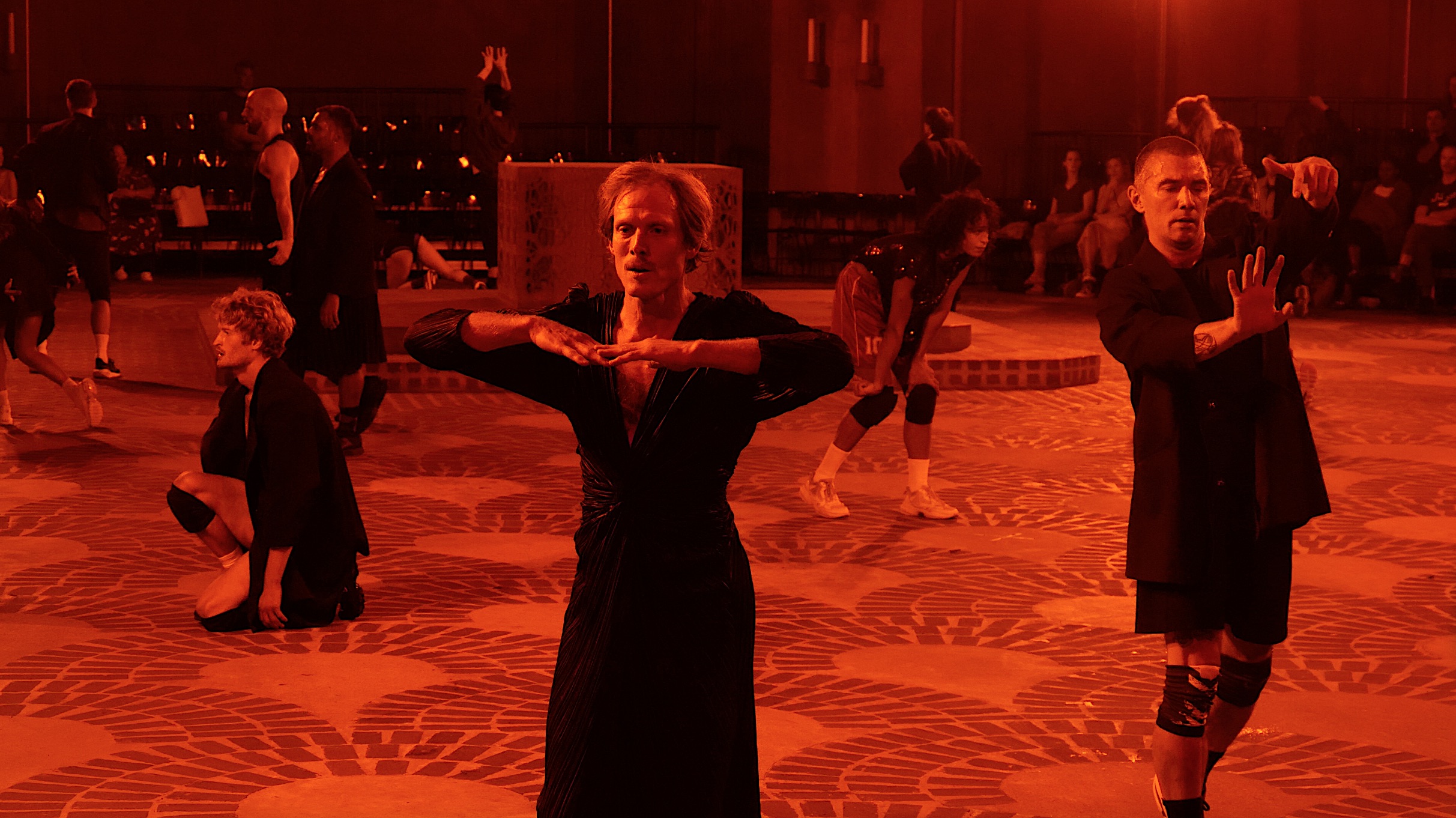
LiberteCathedrale_Boris-Charmatz@TANZweb.org_Klaus-Dilger
And everything under heaven has its hour
The liberté in the cathédrale impresses, yes. It makes itself big, the immodesty is probably also the purpose of this 26-people strong dance effort. So analogue and undigital, it could also be read as a tribute to the unfactual human being. For the most part, the staging is well done, it fits its time, also in that all are soloists and team members at the same time, and the group is mixed in age and body shape; but it is so unsurprising.
The work begins with a kind of tinnitus organ-beeping over the audience rhabarber and an empty centre, lit so sulphur-yellow that all colour disappears. It ends when, after the applause, the organist Jean-Baptiste Monnot sends harmonies to the audience, audibly still in the half-timbered house alley next door. In between, five acts take place, marked by the switching off of lights and the dancers‘ exit.
The programme booklet names and explains the parts, from „Opus“ to „Geläut“, „To Whom the Bell Tolls“ to „Stille“ and „Berühren“. The aforementioned choral singing on „la“, which is ennobled by the grandiose acoustics of the Catholic cathedral built in 1966, is combined by „Opus“ with general running, sinking, rolling, standing up, turning, stopping, running again, pantomimic dressing and undressing, fisting, crawling, shaking. The sounds, one reads later, recapitulate the second movement of Beethoven’s Piano Sonata Opus 111, non-melodies of a deaf composer. A masterly feat of memory by the troupe of dancers. But as a moving image with sound that sometimes swells to fan-like roars and ends in loud whispers, this half hour leaves you cold.
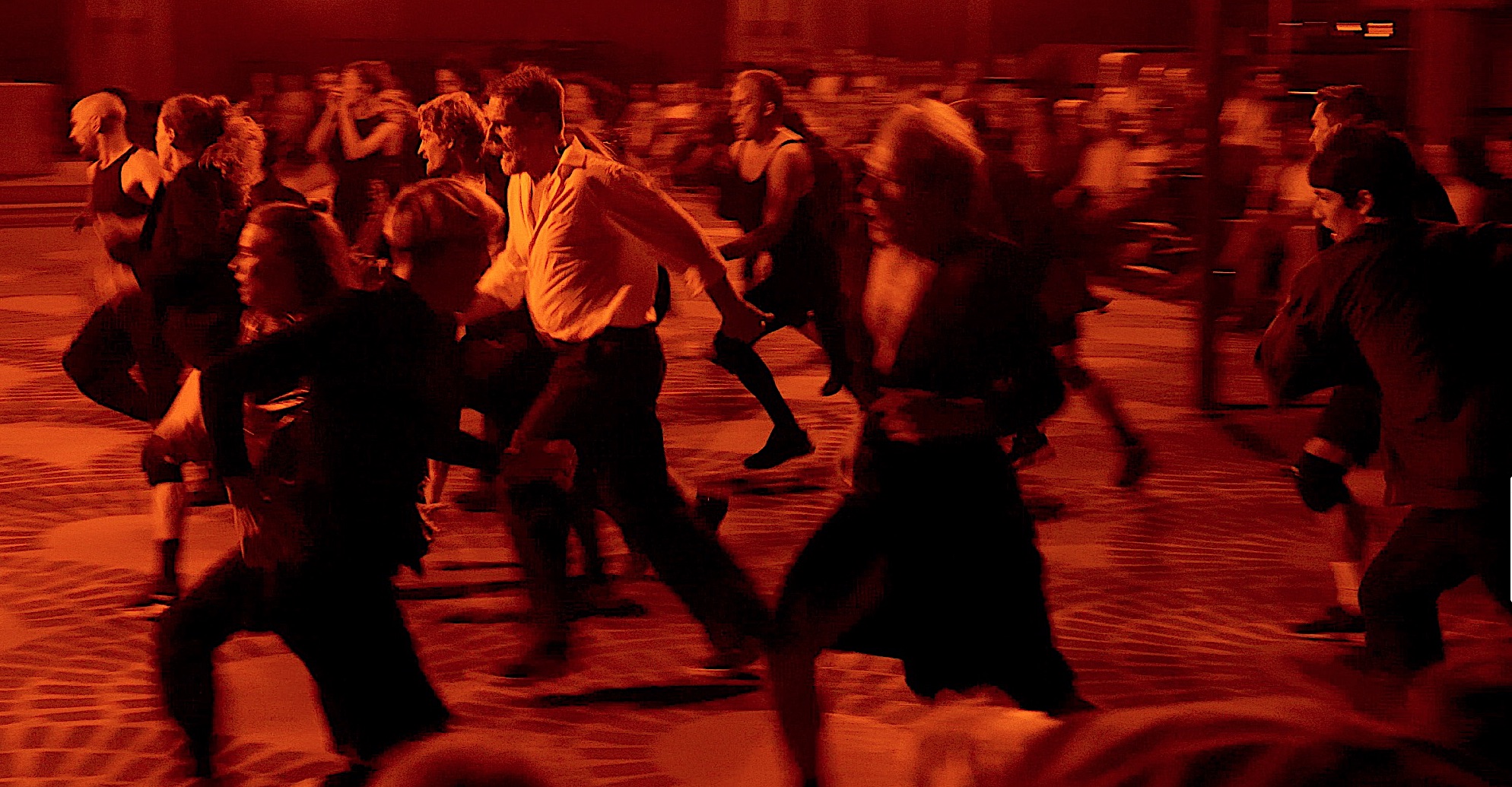
LiberteCathedrale_Boris-Charmatz@TANZweb.org_Klaus-Dilger
Crying has its time, laughing has its time
Then the bells ring, so long that it doesn’t mean a quarter of an hour, not an invitation to a church service, not even a disaster warning. But perhaps their own freedom from the cathedral. It is a recording of several bells in different places, arranged by Olivier Renouf, who lets low and medium-sized ones sound as well as bright small ones that jingle like a carillon. The bells fill the space with intervals, with an eternal up and down or with endlessly repeated strokes that make overtones sing.
The dancers are accessories. Running, repeating short phrases, head down, elbows out, parading in circles like figures in church tower chimes, but in grotesque, lurching, trembling, seemingly losing control, scuffling and swinging, with heads and bodies. Back and forth and up and down. Alone or in pairs. Then jumps, rough holds, lying down, standing up, wrestling and rapping. Procession. Until some dancers stick to the concrete walls as if the centre had spat them out.
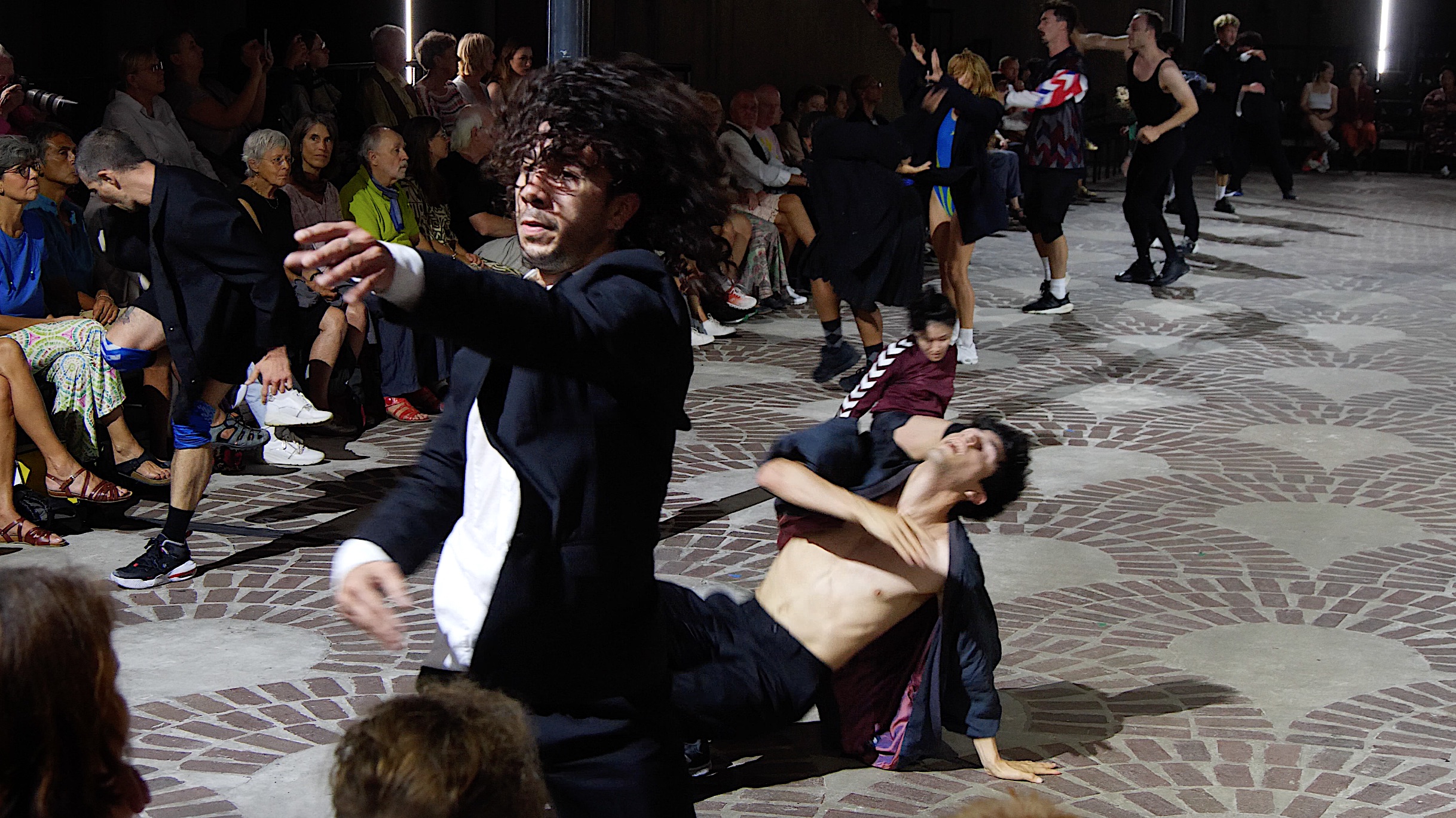
LiberteCathedrale_Boris-Charmatz@TANZweb.org_Klaus-Dilger
Lamenting has its time, dancing has its time
In the third act, there is silence and the mouths are open. The dancers‘ faces scream silently, warning unheard or wondering aloft, their upper bodies bent backwards. Or remind us of baby birds waiting for food, grouped around the altar cuboid. Until a dancer mimes something, and her colleague points accusingly into the audience, engaging in a dialogue that isn’t one, „Right? What? Huh?“. Whereupon a kind of silly entertainment show follows, an audience entertainment with splits, songs and sentences and assaults via sweaty skin contact, without asking. A round of audience members invited to the centre must sing in chorus. „No man is an island“, „every man is a piece of the continent“. It’s by John Donne, but it still sounds cheesy.
The reference to church buildings, sculptures, gargoyles, also to the abuse of human sheep by the „shepherds“ is recognisable. It is almost illustrative here. Especially in the last act. Here the Stockmann organ roars and hums and booms. Phill Niblock’s composition forges thick chords into which further notes are layered; everything that can ever be sung seems to be suspended in the sound. Siren-like it becomes. But the choreography runs out of art: Dancers press against each other, crawl, tumble, quote ballet, lift someone up the shoulder, pull each other up, push each other down. Heaving, tilting, tugging.
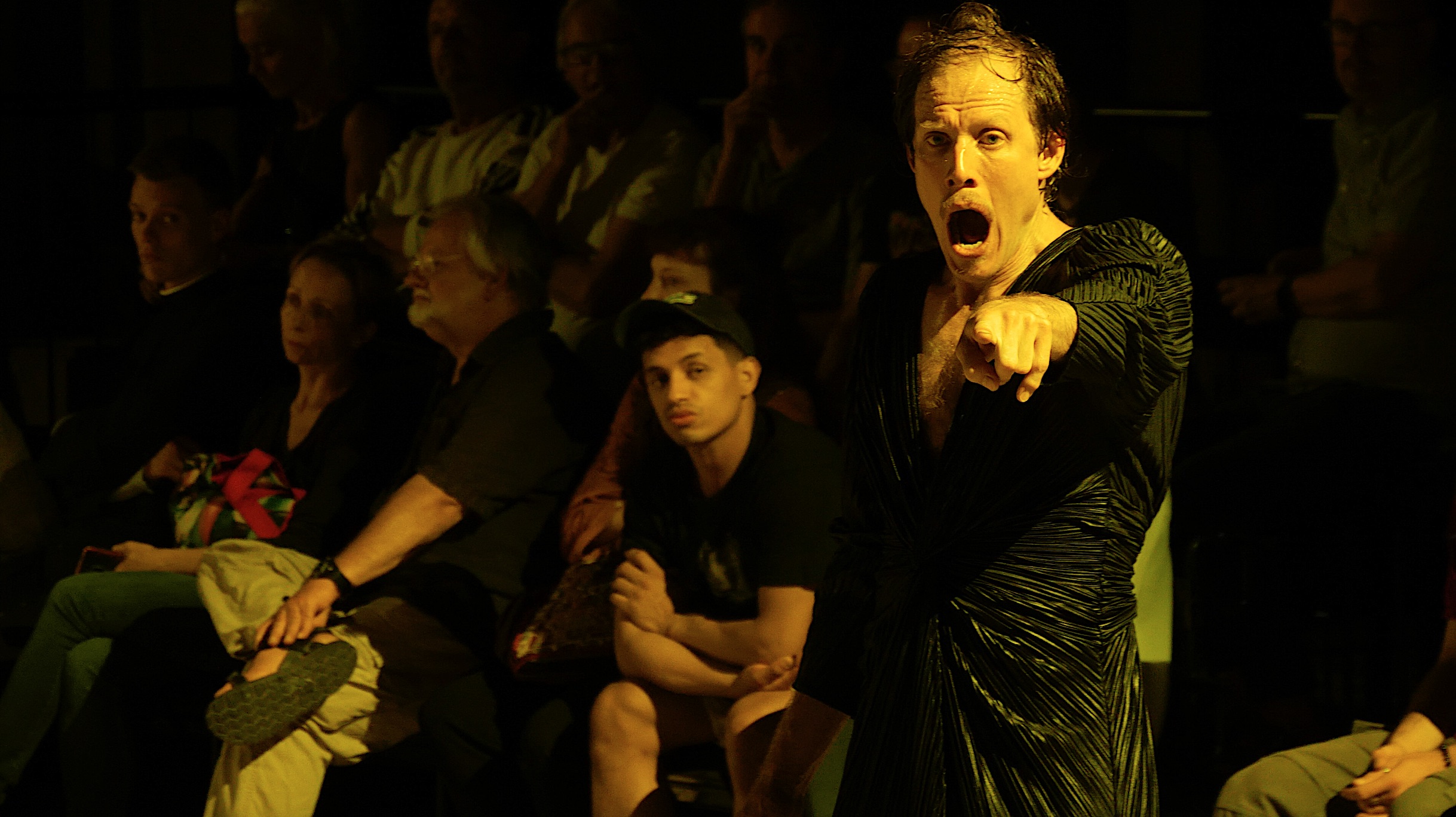
LiberteCathedrale_Boris-Charmatz@TANZweb.org_Klaus-Dilger
Seeking has its time, losing has its time
Charmatz, as a choreographer, is a structurer. How one thing follows another, how scenes begin, develop, stretch out until it is enough, how they merge into the next or end, he usually has a good hand for that. He orders an apparent disorder, kneads a stream of phrases that never become events. Or only just.
You could already see some of his works in NRW, as guest performances at the Ruhrtriennale and in PACT Zollverein in Essen or, a little further away, at the Tanzkongress in Hanover. Elements from these are recognisable. How in „enfant“ the dancers and machines picked up the limp bodies of children and carried them like material; which was later reversed. How in „manger“ the dancers writhed and their bodies seemed to crunch and munch as a whole. How they exerted themselves in „infini“ while counting, in „Levée des conflits“ while racing around, whirling, stumbling. And the „10000 gestures“, which, after much flurry of movement, led impressively to a musical-religious uplift and emotion.
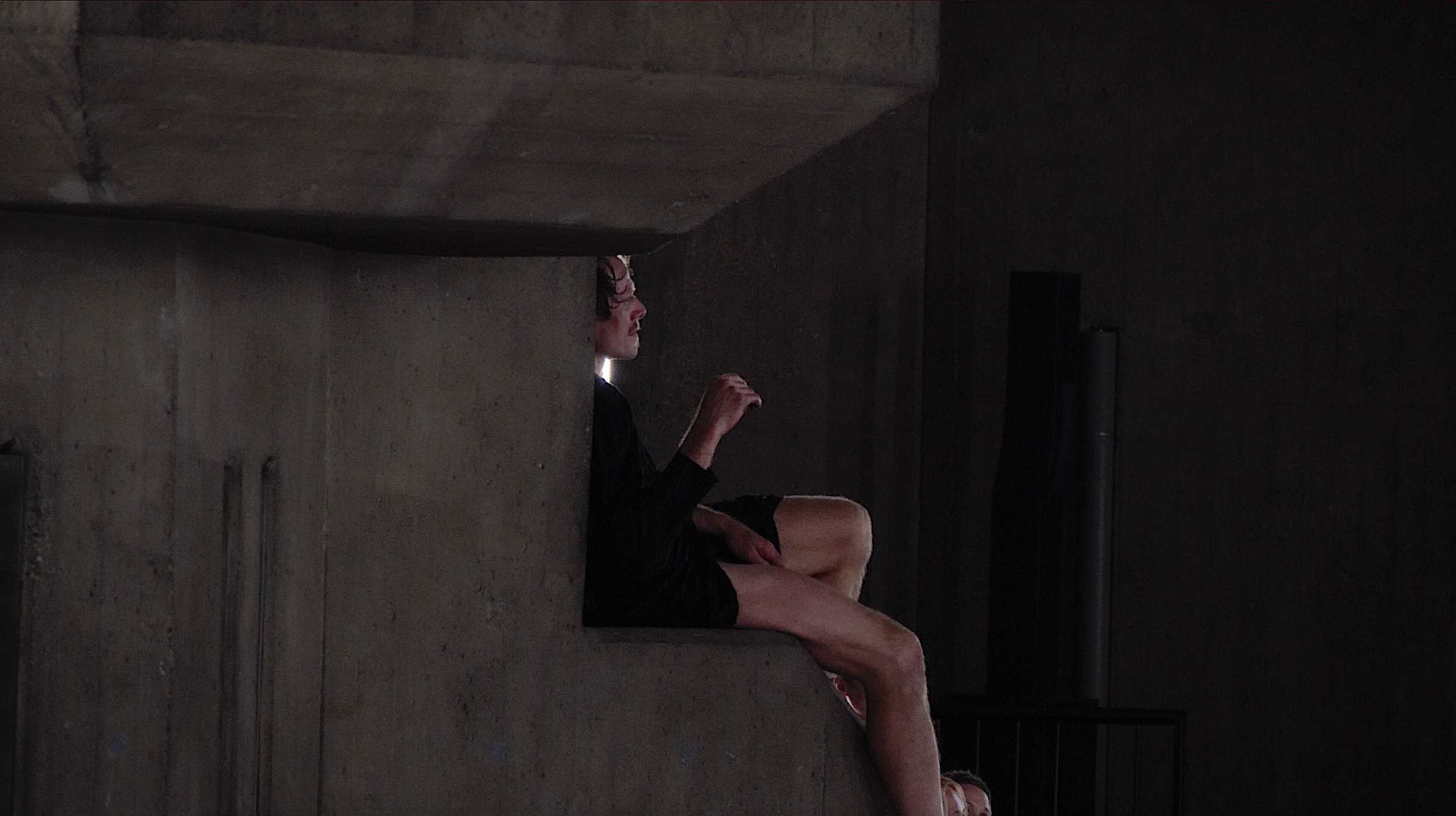
LiberteCathedrale_Boris-Charmatz@TANZweb.org_Klaus-Dilger
not much different or more modern or imaginative than what has long been shown in the „scene“.
Well, the context: if you have an open eye for what so many freelance choreographers and their precarious ensembles in NRW have been putting on stage for years, this Charmatz creation is only bigger in terms of dancers and time budget, but not much different or more modern or imaginative than what has long been shown in the „scene“.
FOLLOWING DATES: In the Mariendom Neviges: 9, 10, 12, 13, 15 and 16 September, each at 8 p.m.
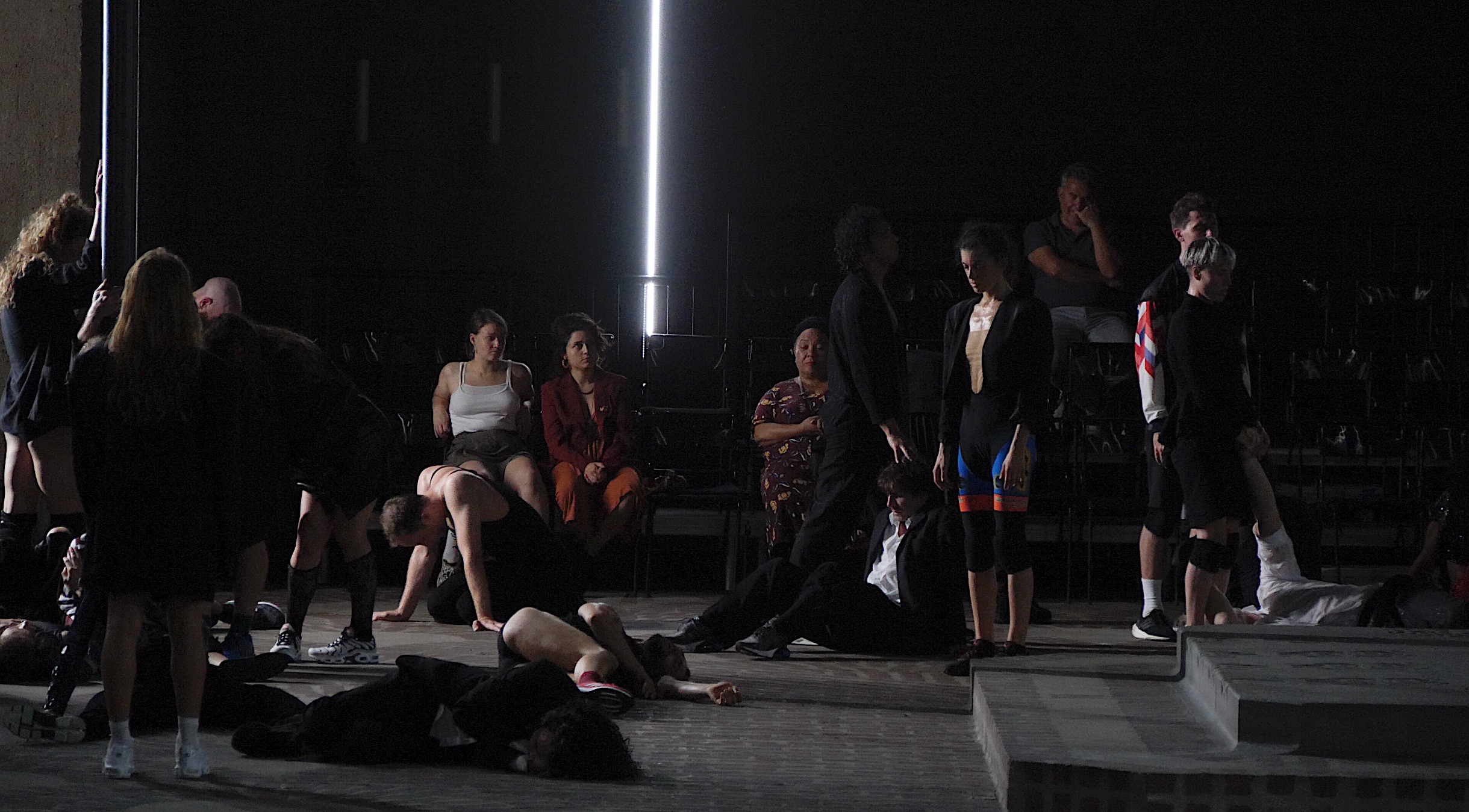
LiberteCathedrale_Boris-Charmatz@TANZweb.org_Klaus-Dilger

